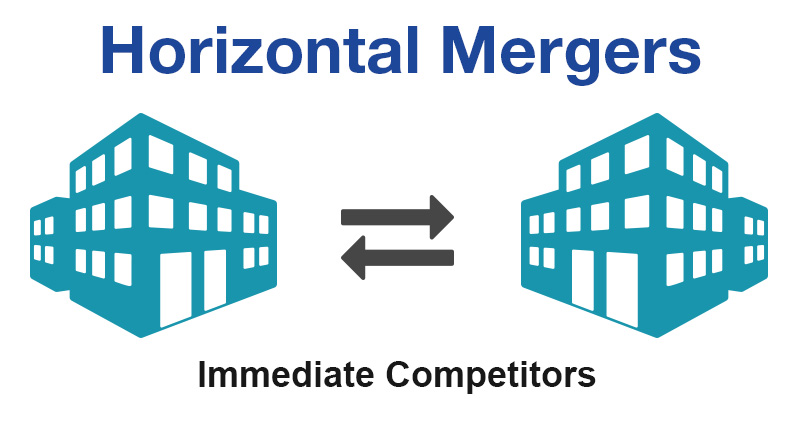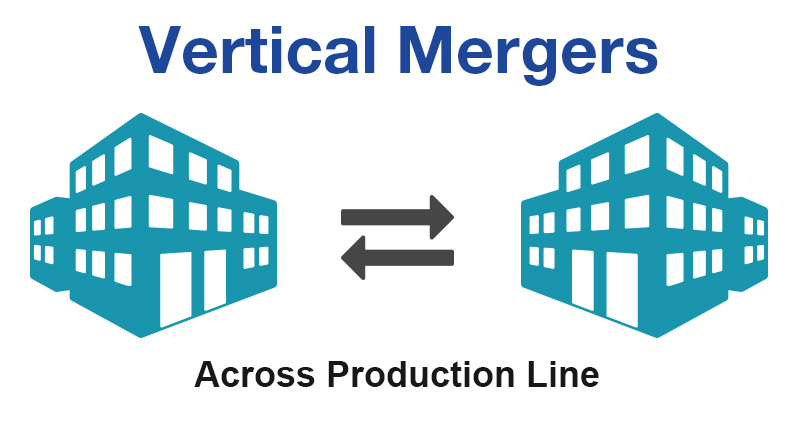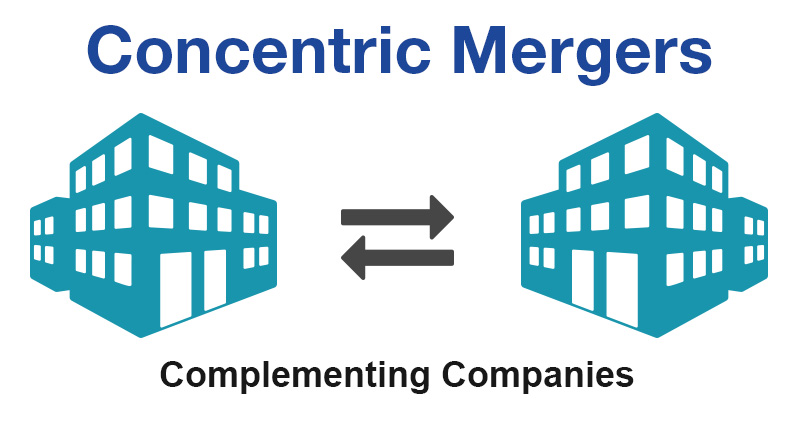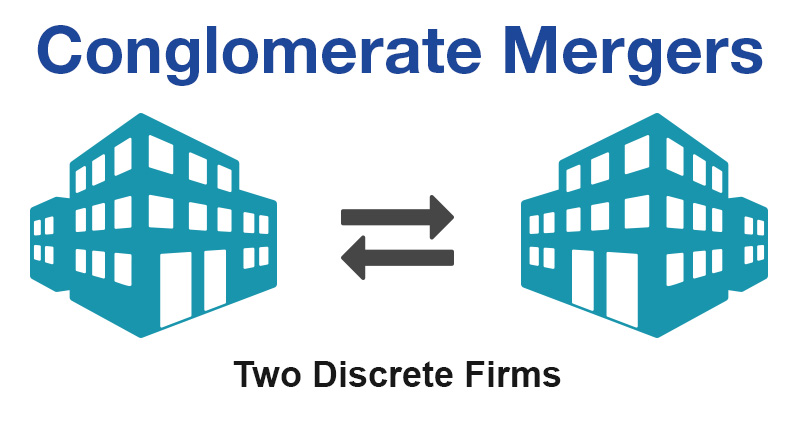A Guide Through M&A – Types of Mergers and Acquisitions

With businesses focused on expansion and increasing market presence, Mergers and Acquisitions (M&A) are a step in this direction and an equally rewarding process. But how do acquiring firms go about the M&A process?
Mergers and Acquisitions may can seem easy as two firms coming together but there’s more to it than meets the eye. The process can be quite a cumbersome task involving a lot of paperwork, legalities and more.
Here, we will see the different types of Mergers and Acquisitions.
Types of Mergers:
1) Horizontal Merger
A horizontal merger denotes the union between two companies, selling the same product or providing services to the same region. The merger widens their reach.

This type of merger happens between immediate competitors and is common in industries with few companies, resulting in stiff competition. Therefore, mergers and their resultant benefits are major driving factors for merged companies in the existing industry.
Useful links: Mergers & Acquisition (M&A) Advisory – A Value Addition to Your Business
2) Vertical Merger
When two companies offering different products for the same service merge, then it is termed to be a vertical merger.

This type of merger mostly occurs between two companies within a production or a distribution process of a particular industry. The purpose behind this kind of a merger is to have high-quality control and gain more command over the supply chain, giving the merged firms a better competitive edge in the industry.
3) Concentric Merger
Similar to horizontal mergers, concentric mergers occur when one company merges with another company to sell products to the same customer, even though they sell different products.

4) Conglomerate Merger
A conglomerate merger happens between two unrelated companies. Conglomerate mergers are of two types:
- Pure Conglomerate Merger happens between companies selling completely unrelated products and who are operating in different markets
- Mixed Conglomerate occurs between companies with the aim to expand product lines or target markets
Useful links: M&A Strategy for SMBs Turns a Burgeoning Trend

Conglomerate mergers can be risky as they result in an immediate shift in business operations. This will be difficult for employees of both companies as they have operated in different markets and offered unrelated products or services.
Types of Acquisitions

Acquisition is basically a process, where an acquiring firm purchases a company with the aim of absorbing the purchased company into its business. There will be no exchange of shares neither will a new company be created.
1) Traditional Acquisition
A formal acquisition involves the purchase of a company through purchase of its shares or assets. It is a great way to expand your business. However, it entails certain disadvantages.
If an acquiring company is buying a firm through purchase of shares, then the buying company also acquires the liability of the target company. This can add to the acquirer’s burdens as it may also have invested in a big loan to fund the acquisition.
As in the case of mergers, there’s also a matter of concern with corporate culture in acquisitions. Although the acquired firm is absorbed into the acquirer’s business operations, the buying out company’s employees are retained. If the acquiring firm fails to ensure that all employees work in harmony and are accustomed to the new environment, then it will negatively impact employee performance and lead to a downward spiral in terms of productivity. This can be a challenge to firms who have expanded their business to enhance service delivery.
2) Reverse Merger
A reverse merger occurs when a private company acquires a public company to attain publicly-listed status. It’s quicker to attain public firm status through reverse merger.
Reverse mergers allow business to grow and reach new markets. This increases the profitability of a business and strengthens its credibility.
However, it’s disadvantage lies in the same area as its advantage. The reverse merger is the most risky way to go public. If employees don’t have prior experience of working in public companies then they will not be prepared for the extensive and expensive compliance requirements of being a publicly-traded company.
It is important for firms involving in a reverse merger to maintain enough funds to continue operations even after the merger and gaining adequate knowledge on regulatory requirements.
Useful Link: Redefining Business Success With IT M&A Advisory Services
Differences Between Mergers and Acquisitions
While most people believe that mergers and acquisitions are the same, there are several differences between the two:
| Mergers | Acquisitions |
| Merger refers to a collaboration of two companies to form a new entity | Acquisition refers to a process where the acquiring gets hold over a major stake in the target company and continues to operate as an individual entity |
| Similar companies are merged together | Large companies purchase small ones |
| The two companies come together to increase their strength and financial profits besides eliminating trade barriers | Firms of two different sizes collaborate to counter the challenges of a decline in business |
| A buyout agreement takes place when both the acquiring and target firms agree for a merger | A buyout agreement happens when the acquiring firm is wanting to buy the target and the buyout firm is not willing to be bought |
Mergers and Acquisitions (M&A) – Reasons

Mergers and Acquisitions are very essential as they increase market share and give a competitive edge for merged companies by way of:
- Reduced redundant operational costs
- Boosted production capacity
- Increasing growth prospects
- Improved existing skillsets and technology
Companies adopt various M&A strategies based on their geographic locations, financial needs and business objectives. Thanks to the mergers and acquisitions benefits, most companies are investing their energies to pool their talents and assets. Be it horizontal merger or traditional acquisition, planning a strategy requires great deal of attention and effort. That’s reason as to why Veritis has M&A process guidance and advisory service in its arsenal.
Key Takeaways:
- Mergers and acquisitions are a key part of business
- It demands eye to detail and clear knowledge how and what the formative decision will bring on
- It is important to have an advisor, such as Veritis, at hand as an objective eye will spot aspects which are not immediately visible to the parties involved
What is your business growth strategy? Looking for M&A advisory by a trusted partner? Contact Veritis!
FAQ’s Related to Mergers and Acquisitions
Mergers and acquisitions are the significant aspects of management, corporate finance, and corporate strategy.
There are five most valuable mergers and acquisitions models that could increase your business growth.
- Vertical Merger
- Horizontal Merger
- Market extension Merger
- Conglomerate Merger
- Product extension Merger
Mergers and acquisitions are considered to be important because they increase the market share and give an edge to merged companies.
They adopt various market strategies depending on their financial needs, business objectives, and geographic locations.
Mergers and acquisitions are a crucial part of the business.
There are five key reasons
- Growth
- Market share
- Synergies
- Geographical diversification
- Eliminate competition
Mergers and acquisitions provide several benefits to business growth. Some of the essential benefits are:
- Tax benefits
- Economies of scope
- Economies of scale
- Increased market share
- Access to talent
Some of the most common cons of mergers and acquisitions include:
- Higher prices
- Lost jobs
- Employee distress
- Financial burden
- Conflict of culture
There are many tax benefits associated with mergers and acquisitions, and some would slightly increase the price of transactions.
Tax gain may also increase in mergers because of surplus funds, unused tax losses, unused debt capacity, and the write-up of depreciable assets.
Additional Resources:

